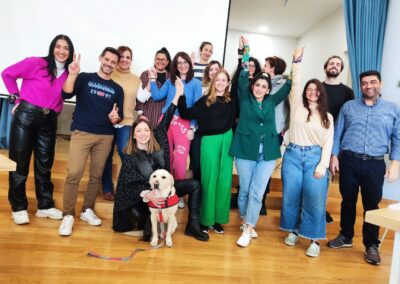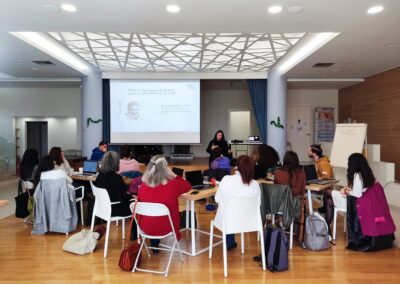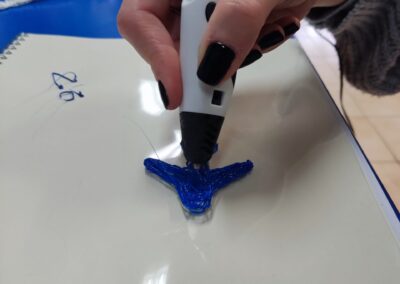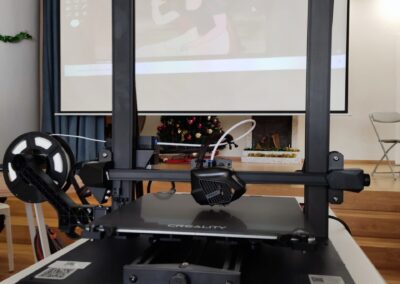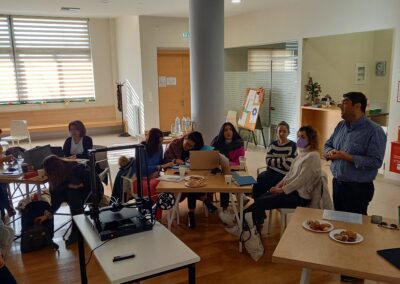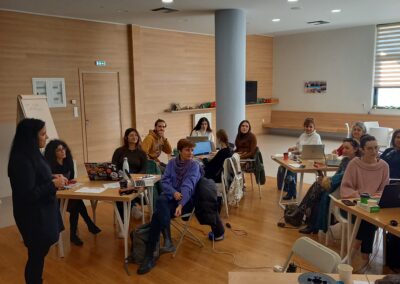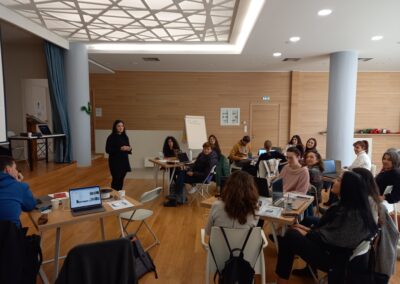Workshop athens
Train the Trainers
During the five-day workshop held on January 4th, 5th, 9th, 10th and 11th, fifteen passionate teachers who work with visually impaired individuals had a unique opportunity to enhance their storytelling skills using the Storybird and Canva applications. These dates provided an intensive learning experience for the participants.
A key focus of the training was to ensure the accessibility of the materials created, regardless of age, culture, or learning criteria. The participants were guided in selecting simple sentences based on the principles of Universal Design for Learning, enabling them to create stories that could be understood by a wide range of individuals.
One significant module of the workshop involved teaching the participants how to convey traumatic stories through children’s drawings. This approach aimed to raise awareness about traumatic experiences and work towards the prevention and elimination of related abusive behaviors.
The training on creating accessible materials was invaluable. The knowledge I gained about Universal Design for Learning has forever changed the way I approach storytelling. I now feel confident in my ability to create inclusive stories that can be enjoyed by people of all backgrounds and abilities.
Attending this workshop was truly an eye-opening experience. Learning to use Storybird and Canva to enhance my storytelling abilities has given me a new perspective on how to engage with visually impaired individuals. The focus on accessibility ensures that no one is left behind when it comes to storytelling.
The module on conveying traumatic stories through children’s drawings was incredibly impactful. It showed me the power of visual storytelling in addressing sensitive topics. I am grateful for the skills I acquired during this workshop, as they will enable me to make a difference in raising awareness and preventing abusive behaviors.
Conveying Traumatic Stories Through Children’s Drawings:
Empathy, Understanding, and Awareness
During the workshop, the participants were provided with a unique opportunity to explore how to convey traumatic stories through children’s drawings. To enhance their understanding, they were given the chance to analyze drawings created by children who had experienced abuse. This exercise aimed to deepen their empathy and comprehension of the severity of such situations.
The participants were divided into three groups, and each group was assigned a set of drawings. Their task was to carefully examine the drawings and create three separate narrations in plain language. The goal was to develop simple yet powerful narratives that effectively communicated the severity of the abuse depicted in the drawings.
Through this exercise, the participants were encouraged to approach the topic with sensitivity, keeping in mind the diverse range of individuals who may engage with their storytelling materials. They learned how to choose their words thoughtfully and craft narratives that were accessible and easily understood by people of varying ages, cultures, and learning abilities.
The facilitators provided guidance and support throughout the process, emphasizing the importance of maintaining a compassionate and respectful approach when dealing with traumatic stories. By carefully analyzing the drawings and collaborating in their respective groups, the participants were able to create narratives that shed light on the gravity of abuse while ensuring the content was suitable for a wider audience.
This exercise not only enhanced their storytelling abilities but also instilled a deep sense of empathy and understanding for children who have endured traumatic experiences. It emphasized the role of storytelling as a means to raise awareness, educate others, and prevent further instances of abuse.
By engaging with the drawings and creating narratives in plain language, the participants gained valuable insights into the severity of abuse experienced by children. Armed with this knowledge, they are better equipped to address such sensitive topics through their storytelling, fostering empathy, and contributing to a safer environment for all children.

